Front-page headlines and worldwide excitement greeted the announcement last month that a telescope at the south pole had appeared to detect the signature of gravitational waves, ripples in space-time first predicted by Albert Einstein, from the very earliest moments of the universe. The discovery, which provides the first direct evidence of cosmic inflation – the long-held idea that in the fraction of a second after the big bang the universe underwent a massive growth spurt – was made by studying the polarisation pattern of the radiation left over from the universe's early years, the so-called cosmic microwave background (CMB).
But it isn't the first time that analysing the CMB, which shows us what the universe looked like when it was only 380,000 years old, has yielded front-page attention and widespread predictions of a Nobel prize win. In 1992, cosmologist George Smoot and colleagues announced the startling news that they had found and mapped a pattern of tiny temperature fluctuations in the CMB using a Nasa satellite. "If you're religious, it's like seeing God," Smoot famously and provocatively said at the press conference to announce the findings. His discovery confirmed the big bang theory of the universe's origin, explaining how that event could have led to the cosmos looking as it does today. The minuscule variations Smoot found were the primordial seeds of the planets, stars and galaxies that exist now. The finding – called by Stephen Hawking the "discovery of the century, if not all time" – made the big bang into a household term and jointly won Smoot the 2006 Nobel prize for physics. "We mapped the embryo universe," says Smoot, now based at the Paris Diderot University in France and the Lawrence Berkeley National Laboratory (LBNL) in California, and who has since worked on successor experiments to produce even finer scale maps of the CMB temperature variations. "If the universe today is a middle-aged person, this is a picture about 12 hours after conception."
Smoot, 69, was born in Florida to parents with little money but a passion for education. He spent his early years exploring the wilds of Alaska after his father landed a government job as a hydrologist there. Later the family moved to Ohio and then Washington DC, where Smoot spent his teenage years in a house full of books and where his parents gave him extra maths and science tuition. "They understood that education was very important and they encouraged us," he says.
Smoot took degrees in mathematics and physics and completed a PhD in particle physics at the Massachusetts Institute of Technology. His career in cosmology began in 1970 when he joined a group, led by Nobel physics laureate Luis Alvarez at the University of California, Berkeley, that was using high-altitude balloons to look for signs of the antimatter that the big bang theory predicted should be abundant.
It was a fruitless search (the universe's antimatter still eludes scientists) that Smoot abandoned after a few years. He turned his attention instead to the CMB, which had been discovered by accident in 1964 (it yielded a Nobel prize for its co-finders) and was considered the first tangible evidence of the big bang. With the idea of seeing whether the universe was rotating, he developed an instrument called a differential microwave radiometer to detect differences between the temperature of the background in two different parts of the sky and mounted it on a U-2 spy plane to make measurements. The experiment showed that the universe was expanding without spinning, but also something unexpected. The background was hotter on one side of the sky and cooler on the other: a "dipole" that meant our galaxy was moving at a phenomenal relative speed, which could only be explained if there was a huge undiscovered distant structure somewhere in space, such as a supercluster of galaxies, pulling it (this was found later and is called the "great attractor"). The startling implication was that the distribution of matter in the universe was not nearly as homogeneous as previously thought, which in turn demanded a reassessment of the universe's origins. If the big bang theory was to hold true, there should be evidence in the CMB of the cosmic seeds from which these enormous structures had grown. Yet other than this dipole from our motion in space, the CMB looked decidedly uniform.
It was the search for these seeds that became Smoot's main focus. Since 1974 he had been working on a proposal to send a satellite into orbit to map the CMB from outside the Earth's atmosphere, in order to get a better view. He joined forces with two other teams with similar aims and in late 1982 Nasa agreed to go ahead with their plans, scheduling the collaboration's proposed cosmic background explorer (Cobe) satellite for launch in 1988 on a space shuttle. Cobe would examine the universe's beginnings with three purpose-built instruments.
Then in 1986 disaster struck. The Challenger space shuttle exploded and the whole fleet was grounded indefinitely, stranding Cobe on Earth. It was a discouraging time. "People would sit with their heads in their hands," says Smoot. He began to talk to Russian and European space agencies about launching Cobe, but when Nasa got wind of this, its officials were livid. The embarrassment of having a major American science project launched by someone else was too much, says Smoot, and Nasa was piqued into finding Cobe an alternative route to space. In 1989, following a hectic effort to reduce its size and weight, the $160m satellite was launched into orbit on a small rocket from Californian airbase.
The first instrument to produce results had been made by John Mather – who Smoot shared the 2006 Nobel prize with. The instrument measured the spectrum of the CMB, revealing a perfect match with how it should look if it had truly emanated from the big bang.
Then towards the end of 1990 and into the following year, the CMB began to swim into view in Smoot's data. First the team saw it as uniform, then they could make out the previously identified dipole. Next they saw departures in temperature from the average background in the four poles of the sky – the first evidence of structure in the early universe. Then finally they saw the many temperature fluctuations: the primordial seeds.
The pattern they made looked like a painting to Smoot. "We thought they would be like random grains of sand messing up a beautiful artwork," he says. "Now we realised they were part of it. There were large, middle and small-scale effects playing together to make really interesting textures on the sky."
Months of meticulous checks and data analysis followed. Meanwhile other physicists grew restless as they awaited news of the big bang theory's fate. Then, 18 years after he started work on the CMB satellite, Smoot made the historic announcement. The big bang model was safe: it could explain how the universe grew into what we see today. The CMB's cooler, denser regions would turn into galaxies, stars and planets. The less dense, warmer regions into the universe's great voids. The pattern originated in the quantum fluctuations from the big bang, which inflation blew up to much larger sizes.
The discovery shot Smoot into the public eye. A book deal and TV appearances followed, including one on the popular American sitcom The Big Bang Theory and a TV quiz show where he won $1m (most of the money he donated to charity, as he did with his Nobel prize winnings). But he makes no apologies for seeking the limelight. "Many scientists think popularising science is somehow degrading it, but I think it is absolutely critical," he says.
And, though he admits it didn't endear him to his colleagues, he seems to have no regrets about his famous "seeing God" quote uttered at the press conference. He was trying to explain the finding to non-scientists in the heat of the moment and it did help draw wider society's attention to the discovery, he says.
As to the new gravitational waves discovery, if confirmed it will be "really stupendous", says Smoot. "What we have seen in less than 25 years is the full development of the use of CMB anisotropies [the distinctive patterns in the radiation] as a probe and a tool to test out ideas of cosmology."
And it will be Smoot and his team who laid the groundwork. "It is difficult to overstate the significance of Cobe," says Marc Kamionkowski, a space physicist at Johns Hopkins University in Baltimore. "The impact on the thinking of scientists was extraordinary. We realised that there really is something there in the CMB to study. That motivated a generation of scientists to think deeply about what more could be done and to then go out and do it."
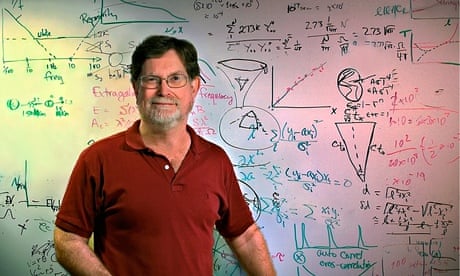

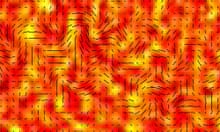
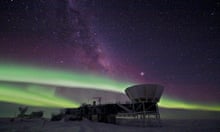
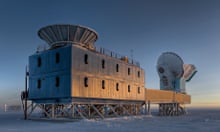
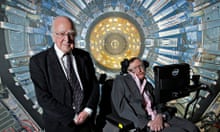
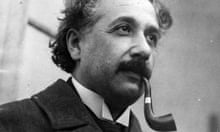
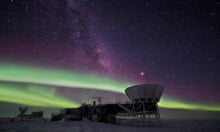
Comments (…)
Sign in or create your Guardian account to join the discussion